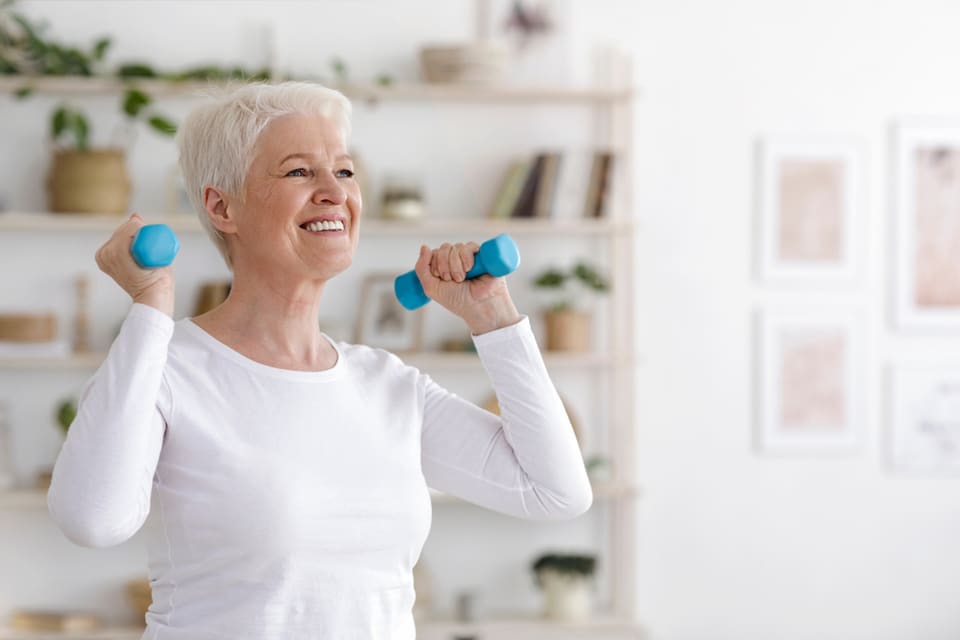
Weight Training for Seniors: 3 Basic Exercises

Just hearing the words weight lifting or weight training can inspire nervousness, especially for older adults who’ve never spent much time in the gym. Perhaps the first image to pop into your mind is a brawny athlete pulling off a dazzling feat of strength — and immediately this type of workout may feel out of reach.
Let our care assessment guide you
Our free tool provides options, advice, and next steps based on your unique situation.
But weight training for seniors can be accessible to just about anyone. In fact, a simple weight program for seniors can help you limit the effects of old age and maintain independence for longer. Plus, you don’t need expensive equipment to experience benefits.
Benefits of Strength training for seniors
Though fighting off muscle loss isn’t the only benefit of strength training for seniors, it’s certainly an important one. Resistance training for seniors can improve mobility, physical functioning, and performance of activities of daily living while also helping to prevent injuries and falls, according to a National Strength and Conditioning Association position statement published in the Journal of Strength and Conditioning Research.
According to the Mayo Clinic, other strength training benefits include:
- Reducing the risk of osteoporosis by increasing bone density
- Losing weight by boosting your metabolism
- Managing chronic conditions such as arthritis, obesity, heart disease, depression, and diabetes
- Improving thinking and learning skills
Safety in weight lifting for seniors
If you’re over the age of 40 and haven’t been active lately, or if you’re living with a chronic condition, you should check with your doctor about starting a strength training program before you even pick up a weight, according to the Mayo Clinic.
“Any client I train above the age of 60 has to first receive clearance from his or her primary doctors,” said Jamie Hickey, a certified personal trainer at Truism Fitness. “You need to know about preexisting conditions like arthritis and blood pressure… [because] you need to advise a fitness plan around these conditions.”
A few more safety tips include:
- Warming up and cooling down for about five to 10 minutes to prevent injury and soreness
- Listening to your body, especially if you’re feeling dizzy or light-headed
- Hiring a professional trainer to learn proper techniques if you’re new to weightlifting

Let our care assessment guide you
Our free tool provides options, advice, and next steps based on your unique situation.
How to start a weight training routine for seniors
Although we know strength training over 65 has proven benefits, it can be hard to know how to start a “best weight training for seniors” workout plan.
Consider beginning with low-resistance body-weight exercises like walking or dancing if you haven’t worked out in a long time. This can prepare your muscles for the change in routine. Then, when it’s actually time to pick up a weight, start light and level up as you become more comfortable.
“Too many times, I’ve seen older clients come in thinking that they’re going to start off where they were in their 20s and 30s,” Hickey said. “That’s a recipe for injury. Don’t be ashamed to just use the barbell or curl bar with no weights on it. I’ve even had people start off with PVC pipes just to get the movement down before we start using any kind of weight.”
You don’t necessarily need advanced equipment for a weight training routine for seniors. Lighter dumbbells and resistance bands — sometimes called resistance tubing — are relatively inexpensive options. Even soup cans or similar, evenly weighted items around your house are enough to start a simple and easy regimen.
3 simple weight exercises for seniors
Here are a few geriatric weight lifting exercises, along with modifications to either make them easier or more difficult. Even a single set of 12 to 15 repetitions using an amount of weight that fatigues your muscles can build strength, according to the Mayo Clinic.
For these examples, all you need are a set of dumbbells, or evenly weighted items such as soup cans, and your own body weight.
1. Squat
The squat is perhaps the most familiar weight lifting exercise and targets your glutes, quadriceps, hamstrings, and hip flexors. It’s ideal for improving balance and core stability, according to the Mayo Clinic.
Start by standing tall with your feet about shoulder width apart. Then, hold your arms straight out in front of your body and push your hips back into a seated position. Bend until your knees approach 90 degrees. Then, push upward through your heels back to a standing position.
Easier modification: Try out a chair squat by putting a chair or bench behind you as you lower yourself. Then, push upward just before you touch. This added safety measure can help if you struggle with balance.

Harder modification: Complete a goblet squat by holding a dumbbell against your chest as you squat.
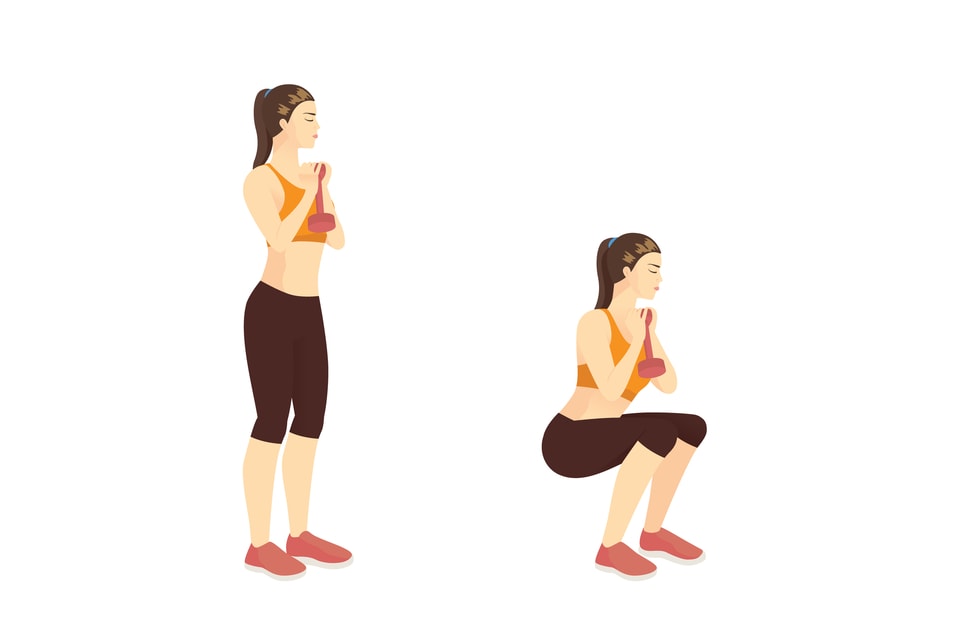
2. Overhead press
An overhead press exercises muscles in your chest, shoulders, arms, and back. It’s helpful for maintaining arm mobility in common activities like dressing.
While standing with a dumbbell in each hand, lift the dumbbells to your shoulders with your palms facing up/forward. Lift the weights above your head with your biceps near your ears when you’re fully extended. Then, return to the starting position with the dumbbells resting slightly on your shoulders. Be careful not to arch your back as you lift, and use a lighter weight if you feel wobbly.
Easier modification: Here’s where you can get creative and use soup cans or evenly weighted water bottles if weights seem too heavy. This exercise can also be completed from a sitting position for those who can’t stand for long periods.
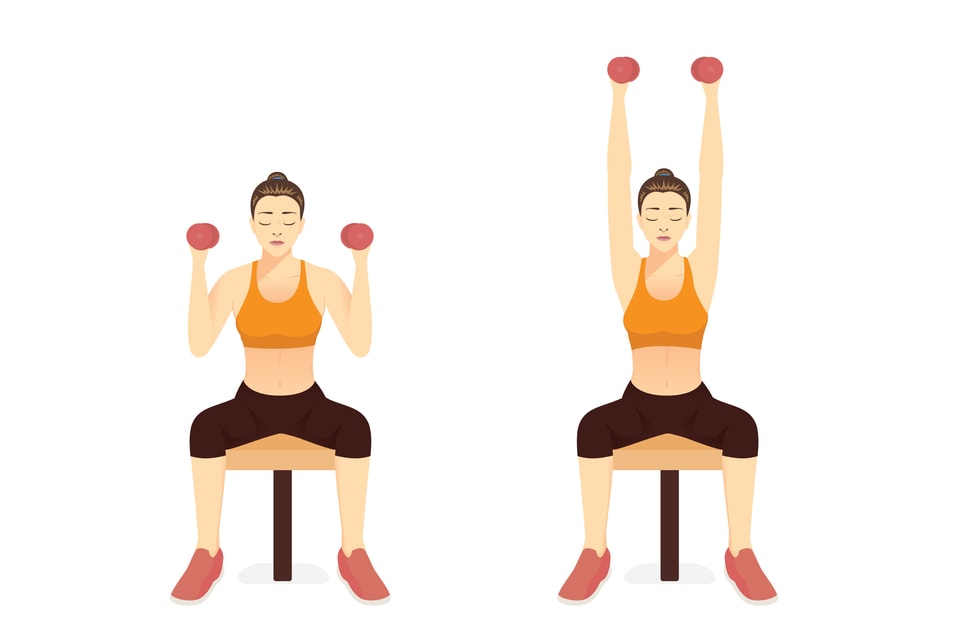
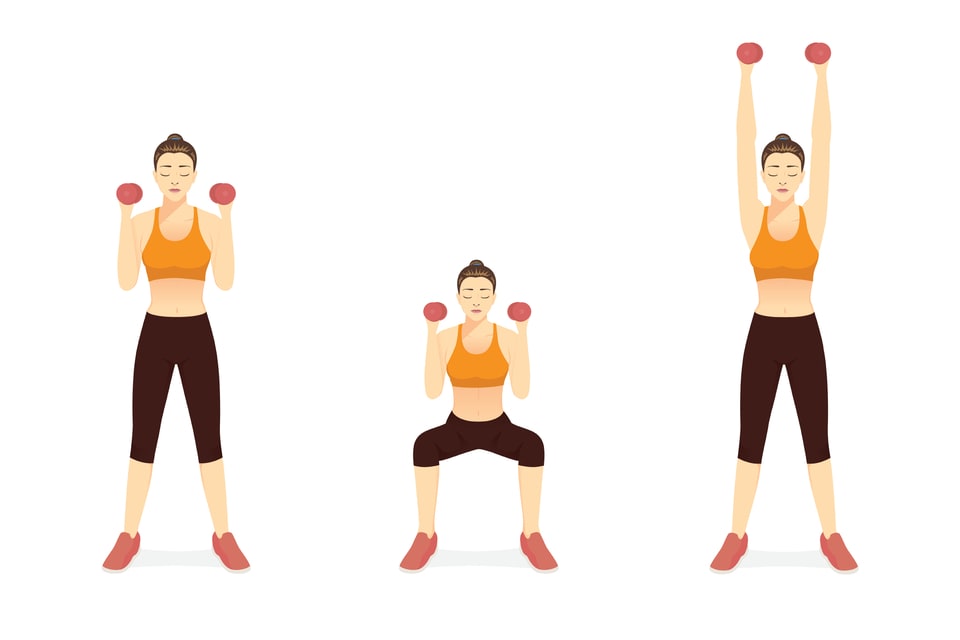
3. Plank
The plank is a popular resistance training exercise that works muscles throughout your body, with the core, shoulders, and arms targeted the most. A plank is better for your spine and neck than a sit-up or crunch machine and activates muscles deep in your abdomen, according to the Mayo Clinic.
To begin, get on your hands and knees, then straighten your legs until you’re balancing on your hands and toes — almost as if to begin a push-up — then lower yourself onto your elbows. Take care to keep your body in a straight line with no curve at your hips or in your spine. Hold this position as long as you’re comfortable, building up the duration over time.
Easier modification: Plank on your elbows against the wall, standing several feet away from the wall. For more of a challenge, step your feet backward gradually as you build strength.
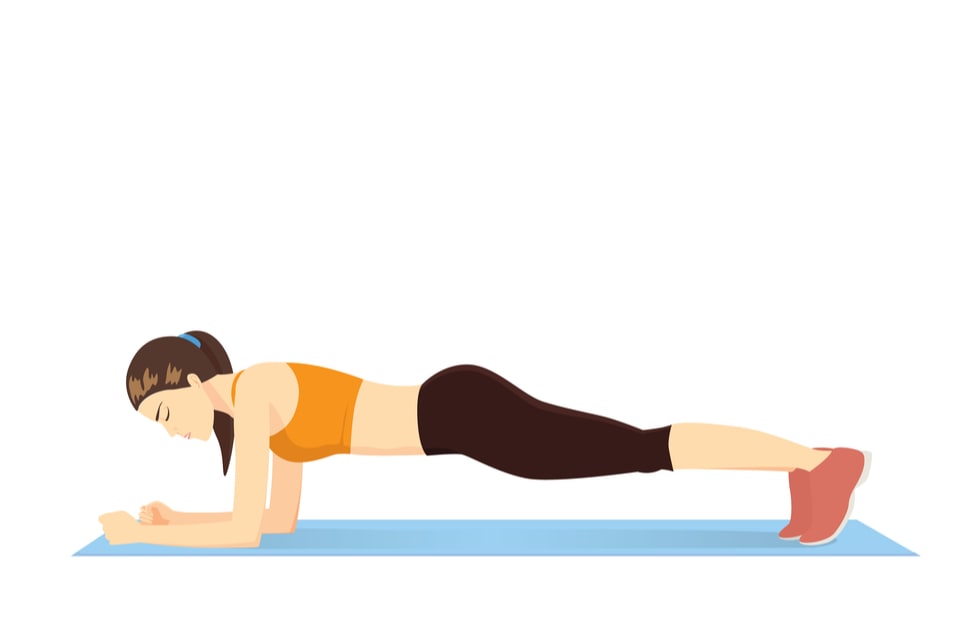
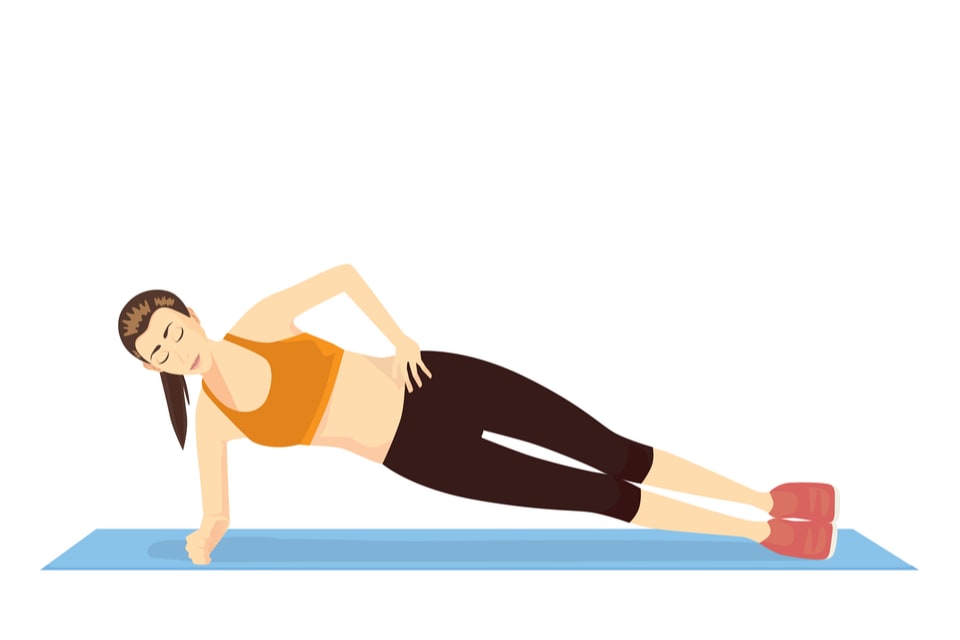
Recovery from strength training for elderly weight lifters
As we age, recovering from physical exercise just takes longer. The positive? A properly designed weight-lifting program of two to three sessions per week can build strength and improve physical functioning, according to the National Strength and Condition Association. This means you can give yourself a day or two between workouts.
Other important tips on how to recover after strength training from the International Sports Sciences Association include:
- Cool down and prevent muscle soreness by taking an easy walk or riding an exercise bike.
- Stay hydrated before a workout, and consume protein and carbohydrates within an hour afterward.
- Aim for seven to nine hours of quality sleep by limiting screen time an hour before bed and staying on the same schedule.
- Do some stretching, yoga, or light walking on recovery days.
Sources:
Fragala, M.S., Cadore, E.L., Dorgo, S., Izquierdo, M., Kraemer, W.J., Peterson, M.D. & Ryan, E.D. (2011, March). Resistance training for older adults: Position statement from the National Strength and Conditioning Association. Journal of Strength and Conditioning Research.
Mayo Clinic. (2021, May). Strength training: Get stronger, leaner, healthier.
Gaz, D.V. (2017, January). Body-weight training: Ditch the dumbbells. Mayoclinic.org.
International Sports Sciences Association. (n.d.). Best ways to optimize recovery for strength training. Issaonline.com.

Talk with a Senior Living Advisor
Our advisors help 300,000 families each year find the right senior care for their loved ones.
Benefits of Strength training for seniors
Senior living options in all states
The information contained on this page is for informational purposes only and is not intended to constitute medical, legal or financial advice or create a professional relationship between A Place for Mom and the reader. Always seek the advice of your health care provider, attorney or financial advisor with respect to any particular matter, and do not act or refrain from acting on the basis of anything you have read on this site. Links to third-party websites are only for the convenience of the reader; A Place for Mom does not endorse the contents of the third-party sites.
Make the best senior care decision
Make the best senior care decision